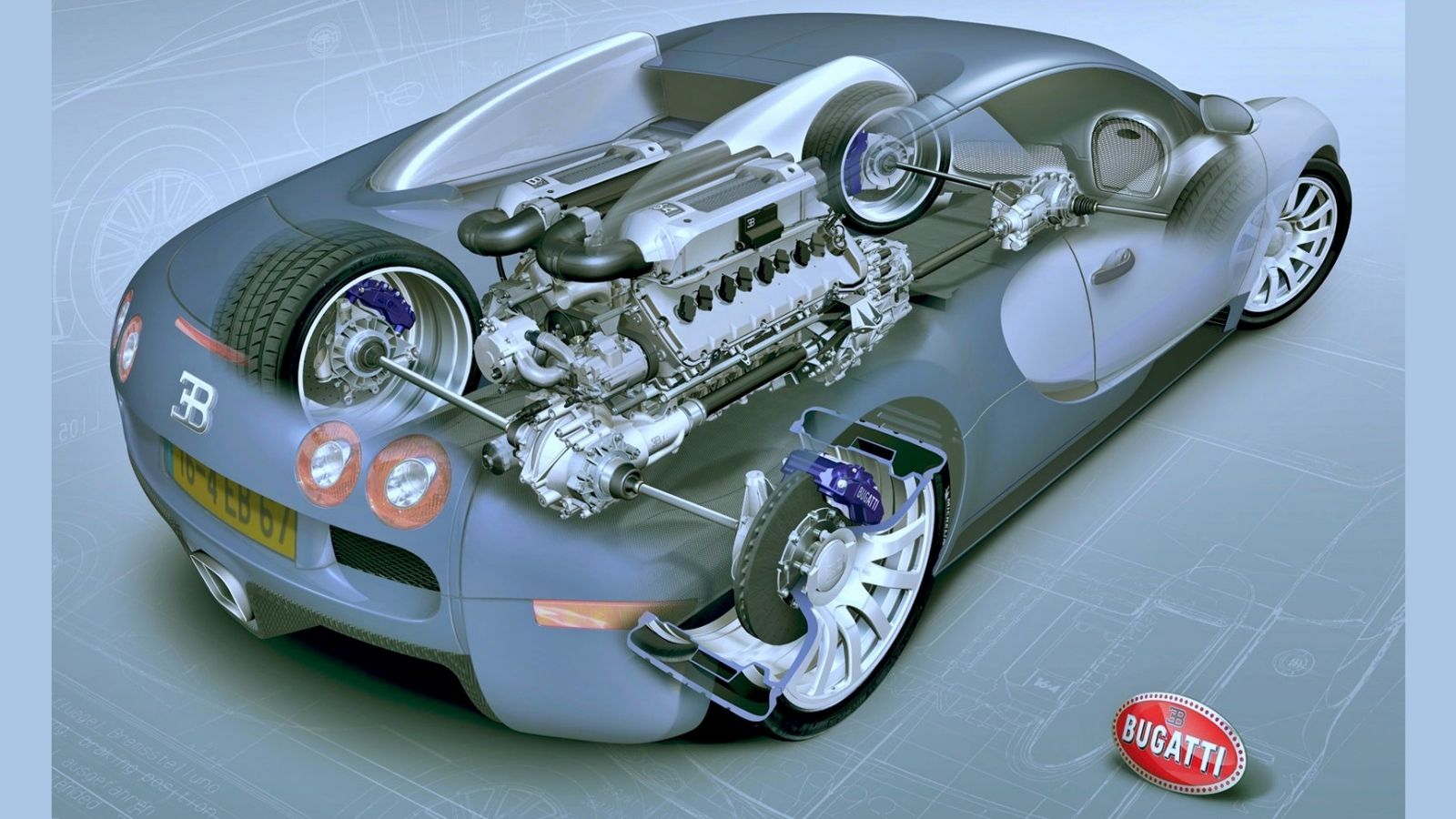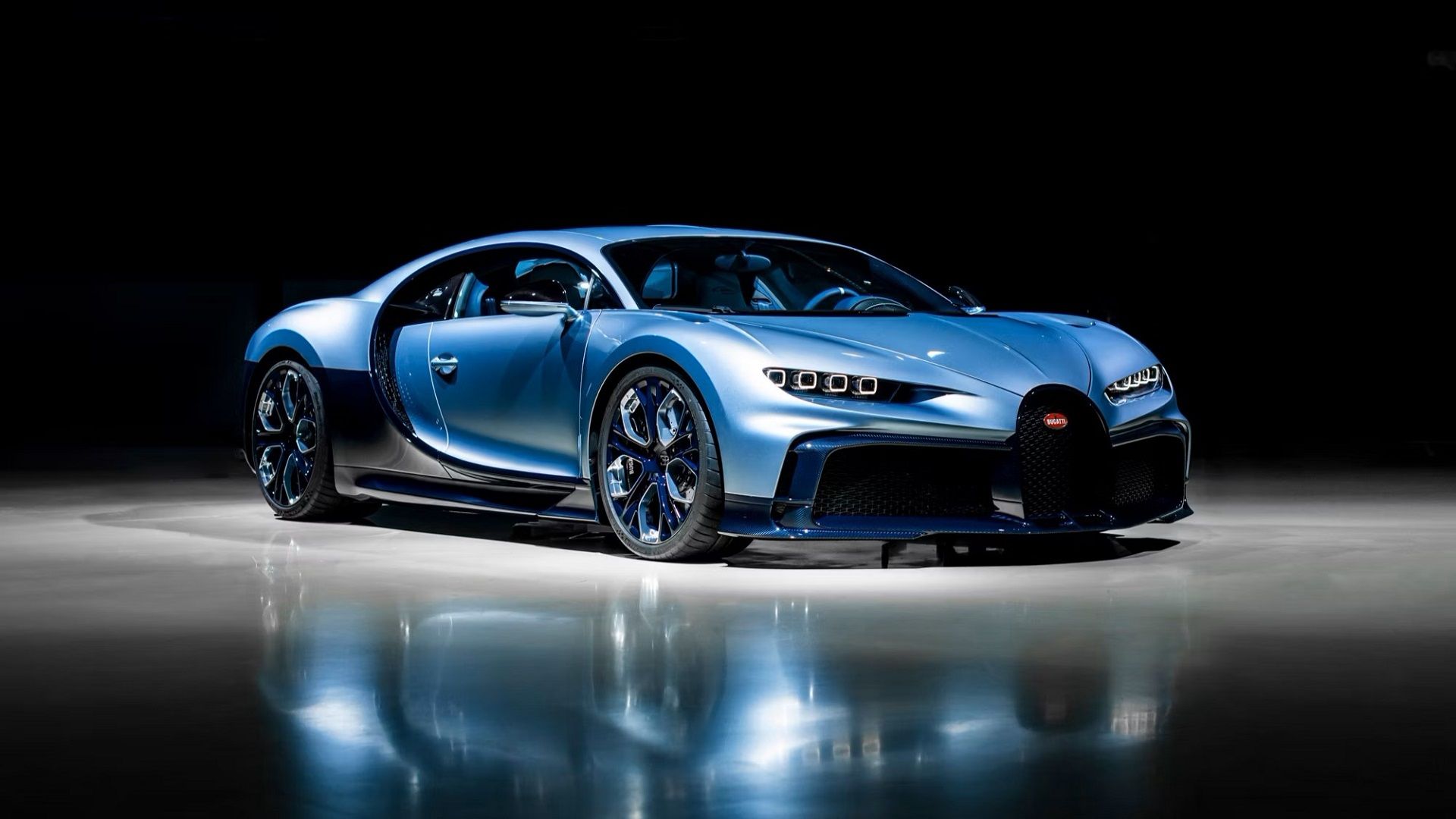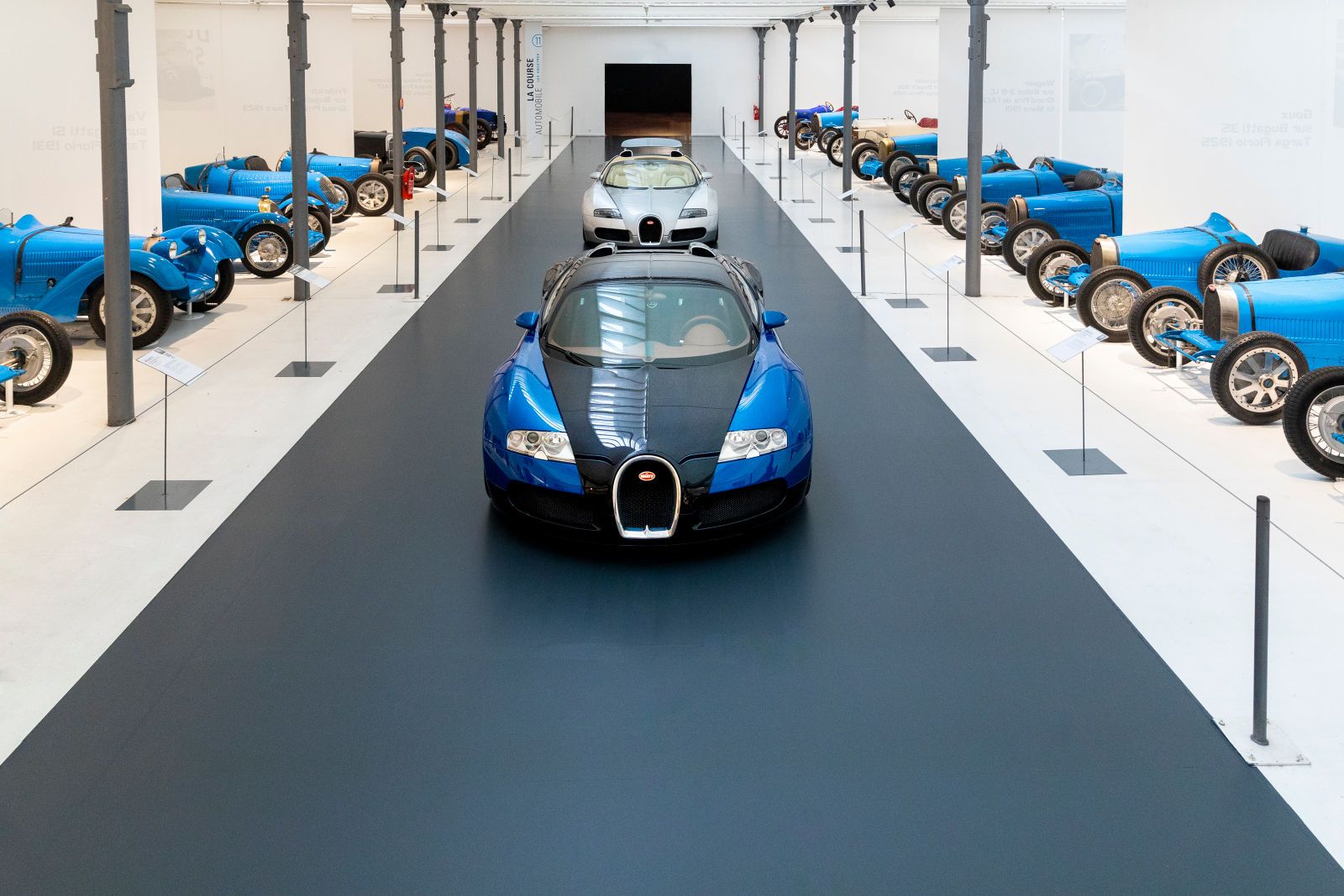Summary
- Bugatti’s iconic W-16 engine has been a game-changer in hypersports cars, redefining vehicular excellence with its unprecedented power and compact design.
- The W-16 engine, which started as an audacious vision doodled on an envelope, went through extensive development and testing to become a groundbreaking engineering masterpiece.
- The Chiron, Bugatti’s successor to the Veyron, raised the bar even higher with its refined W-16 engine, boasting remarkable power output, advanced technology, and unmatched performance.
For nearly two decades, Bugatti’s iconic 8.0-liter W-16 engine has been a cornerstone in hypersports cars, boasting the rare distinction of being the world’s only W-16-cylinder engine used in a production vehicle. This power behemoth, which first stunned the world in 2005 when it was revealed as the heart of the revolutionary Veyron 16.4, redefined vehicular excellence, merging unprecedented power with compact design and versatility. It shattered acceleration records, zooming from 0 to 62 MPH in a mere 2.5 seconds and achieving speeds over 248 MPH, and also gave birth to an entirely new class of vehicle: the hypersports car.
Years later, the legacy continued with the unveiling of its successor, the Chiron, in 2016. The Chiron embraced the grandeur of its predecessor. Still, it raised the bar even higher, housing a beast with a staggering power output of nearly 1,479 horsepower, later soaring to an earth-shattering 1,578 horsepower, thanks to advancements like larger turbochargers and a comprehensive fuel injection system, rewriting the rules of automotive performance. The fact that this 16-cylinder marvel stands alone in the world of production vehicles is a testament to its rarity. So, let’s delve into the tale of the W-16 engine and uncover what sets it apart.
From Doodles To Dominance: The Inception Of The W-16 Engine
In 1997, amidst the rhythm of a Shinkansen train journey from Tokyo to Osaka, Ferdinand Karl Piëch, the then-Chairman of Volkswagen AG’s Board of Management, doodled an audacious vision on an envelope. The legendary engineer proposed an engine boasting 18 cylinders. While the initial concept was grand, it would evolve into the iconic 16-cylinder engine, resonating echoes of Ettore Bugatti’s original genius.
Key Moments In The W16’s Development:
- Genesis of an idea: Ferdinand Piëch’s initial sketch, inspired while on a high-speed train.
- A shift in perspective: A nod to history as the 18-cylinder concept was refined to the W16, an ode to Ettore Bugatti’s innovation.
- Challenges aplenty: With no precedent for engines exceeding twelve cylinders or vehicles surpassing speeds of 217 MPH, VW’s Head of Engine Development Karl-Heinz Neumann and his team were charting unexplored territory.
Gregor Gries, an integral part of Bugatti’s renaissance and its Head of Technical Development until February 2022, reflects on the journey with awe and humor.
“At the time, no one really believed there could be a vehicle for the road that boasted 1,000 horsepower. We wanted to prove we could construct an engine that was not only powerful but also manageable.” Gries recalls.
The engineering team didn’t just modify existing designs; they reinvented the wheel. “We had to engage in basic development for every component; every vehicle part had to be constructed anew and tested – even the engine test bench. The only thing we didn’t change was the pencils we used for drawing,” Gries said.
Turning Piëch’s envelope doodle into an engineering masterpiece was no small feat. The W-16, remarkably compact for its prowess, was equivalent in size to a V-12 and weighed around 882 pounds. This was achieved by placing two eight-cylinder blocks at a 90-degree angle, supercharged with four turbochargers.
Neumann emphasizes the gravity of their undertaking, “One thing proved to be a particular headache – the car had to stay grounded, its power had to stay on the road – which isn’t easy at these speeds. But proving it was possible to construct an engine that could deliver this was incredibly cool. There was a real sense of fulfillment when the W-16 was finally up and running.”
Unleashing The Power Of Innovation: Bugatti’s Double-Biturbo Engine Saga
In 2001, Bugatti heralded a new era in automotive innovation by introducing a mechanical marvel: the double-biturbo engine. This epitome of engineering, crafted with over 3,500 painstakingly hand-assembled components, showcased an initial jaw-dropping 1,001 horsepower. It boldly challenged existing boundaries, taking automotive technology to uncharted realms. Its crown jewel was a mammoth titanium exhaust system adept at handling the extreme heat generated by this powerhouse.
Bugatti’s Ion Current Sensing (BIS) system is a cutting-edge innovation that keeps track of each engine cylinder for optimal performance. Placing a strong emphasis on stability and efficiency, the Bugatti engineers didn’t hold back on power and reliability – with the help of BIS, misfires or knocking are prevented.
Also, Bugatti developed an industry-first advanced cooling system, a dual water-cooling system that effectively handles extreme loads while keeping the engine temperature perfectly balanced. Moreover, their revolutionary turbochargers take engine performance to the next level with four turbochargers.
It offers a driving experience that’s boundless and exhilarating, sure to leave a lasting impression on any driver. In addition, the W-16 engine’s unique sound profile reflects the dedication to refining Bugatti automobiles. As the load increases, it transitions from a balanced hum to a roaring growl, giving drivers an audio experience as thrilling as the car’s performance.
Through time, the W-16 got some loving touch-ups, pushing it to an impressive 1,200 horsepower in the Veyron 16.4 Super Sport. In 2010, this beauty turned heads by racing to 267 MPH, landing it a cool spot in the Guinness Book of Records.
Beyond The Veyron: The Dawn Of The Chiron Era
As the sun began to set on the illustrious era of the Veyron 16.4, which encompassed iconic derivatives like the Grand Sport and Super Sport, Bugatti crafted its next masterpiece, intending to exceed the previously set illustrious benchmarks. The Veyron variants had etched their place as sought-after collector’s pieces, epitomizing the nexus of speed, luxury, and exclusivity.
Taking center stage was the formidable challenge of sculpting the Chiron. This heir would embody sophistication, magnified luxury, and amplified power while bearing a quieter and more refined W-16 engine. Tilo Fürstenberg, the captain who was steering the ship of engine development at Bugatti, said, “As well as greater power output based on the same dimensions and engine weight, we wanted to improve the acoustics, consumption, and emissions.”
Notable Developments:
- Engine overhaul: Maintaining the compact engine blueprint and the 2.87-inch pitch, every detail was enhanced, embodying a spirit of innovation.
- Power boost: The reimagined W-16 flaunted a remarkable 1,479 horsepower, carving out a significant jump from its Veyron 16.4 ancestors. This denoted a groundbreaking surge of 50% from the initial Veyron and a nearly 24 percent escalation from the Super Sport model.
- Elevated agility: The maestros at Bugatti realized a swift and instantaneous power transfer, forging a proficient and phenomenally potent engine encounter.
The Chiron stood tall, showcasing Bugatti’s unending quest for the best. This beauty reset the benchmarks of luxury and speed in the automotive world, setting another high point for the cherished W-16 engine journey.
Pushing The Boundaries: The W-16’s Journey To New Peaks
A significant chunk of the revamped performance can be attributed to the introduction of innovative exhaust gas turbochargers paired with cutting-edge sequential turbocharging. Four turbochargers were essential to realize the elevated output, first hitting 1,479 horsepower and later rocketing to 1,578 horsepower for models like the Chiron Super Sport and the Centodieci.
Remarkably, each charger is designed to handle airflows that serve approximately 380 horsepower. The newly introduced turbochargers, 69 percent larger than the Veyron’s, operate in a two-stage process with a sequential engagement, enhancing efficiency and output.
Reaching peak performance involves the harmonious interplay of all four turbochargers, ensuring a smooth torque delivery without any discernible drops. Key to this intricate dance is an exhaust gas valve constructed from a specialized high-temperature material alloy, robust enough to endure searing temperatures of 1,796°F.
The relentless pursuit of excellence bore fruit when the Chiron Super Sport 300+ shattered records in 2019, becoming the first-ever production car to breach the 300 MPH barrier, registering a mind-boggling speed of 304 MPH. Consequently, the Chiron Super Sport’s electronic limiter was set at an audacious 273 MPH, making it the fastest Bugatti ever produced, with the Centodieci standing as a monument to unmatched power.
Reflecting on the engine’s journey, Bugatti Automobiles President Christophe Piochon said, “Who would have thought we would continue to develop the W-16 for so long and so impressively? Starting at 1,001 horsepower, we added 200 with the Veyron Super Sport and Vitesse. We then made a huge leap to 1,500 horsepower with the Chiron in 2016 and added a further 100 horsepower in the Chiron Super Sport and Centodieci between then and 2019. In other words, we increased the W-16’s power output by 60 percent in the space of 14 years.”
A Masterpiece In The Making: The Rarity Of The W-16
Creating Bugatti’s 16-cylinder engine is an exercise in unparalleled precision and commitment to quality. Before reaching production, it undergoes rigorous scrutiny, aided by sophisticated computer simulations and a custom-engineered test bench. The Chiron engine endured over 16,000 hours of meticulous development and vehicle trials exceeding 310,000 miles.
The craftsmanship of this caliber necessitates an exclusive space, and the Volkswagen plant in Salzgitter dedicates a unique room solely for the assembly of the W-16 engine. Here, two master technicians devote six days to the detailed manual assembly of the 3,712 individual components that constitute this marvel of engineering. This curated process ensures that every engine adheres to Bugatti’s exacting standards, embodying the epitome of automotive excellence.
Once assembled, each engine embarks on a journey to Molsheim, marking the initiation of the Chiron’s final assembly at the revered Bugatti Atelier. This stage unfolds over several weeks of meticulous handcrafting. It culminates in a masterpiece hyper sports car standing ready, a true embodiment of luxury and power, poised to grace the roads with its rare and unrivaled presence.




